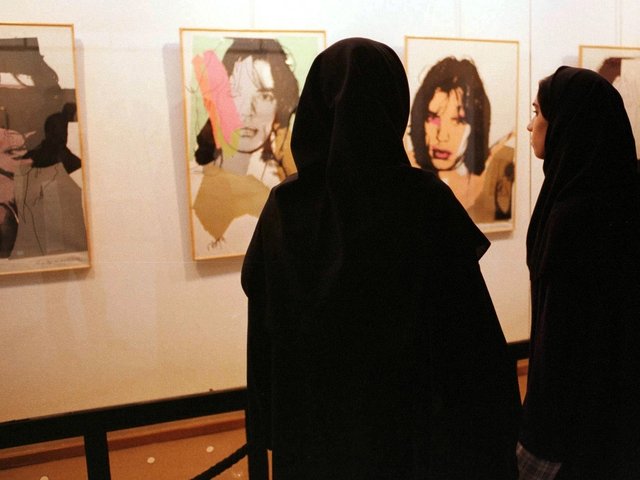Iran is starting to use its soft power, agreeing last month to lend works from the Tehran Museum of Contemporary Art’s (TMoCA) collection of international and Iranian art for an exhibition in Berlin next year. The show, a symbol of Iran’s rapprochement with the West, could travel beyond Berlin, a spokeswoman for the Tehran museum tells us. The exhibition will include works by international and Iranian artists.
Other leading museums have expressed an interest in borrowing from the Tehran collection, which includes works by Picasso, Rothko, Pollock and Bacon among others. The Hirshhorn Museum and Sculpture Garden in Washington, DC, has had preliminary discussions with the Tehran museum, a spokeswoman confirms.
The late Shah’s wife, Farah Pahlavi, who lives in Paris and the US, was instrumental in opening TMoCA in 1977 and in building the collection, which is considered to be the best collection of 20th-century US and European art outside the West. “Farah, despite lukewarm support from the Shah, pushed to open up Iranian culture to all comers, introducing very avant-garde art forms from the West,” says Hossein Amirsadeghi, the editor of the book Art & Patronage: the Middle East. When hardline conservatives gained power after the Islamic Revolution in 1979, much of the collection was put in store. But in the past few years, many works have been shown in Tehran and a few have been lent abroad.
TMoCA’s deputy director, Ehsan Aghaei, says that the museum welcomes the possibility of further collaborations. “We have received a number of requests,” he says. Institutions that have expressed an interest include the Schirn Kunsthalle Frankfurt. “We negotiated last year with museum officials in Tehran about a possible major show of the entire [Farah Pahlavi] founding collection,” says Max Hollein, the director of the German museum. Negotiations stalled, however. “The amount of money requested became an insurmountable issue. It was not meant to be a foreign policy project but a collaboration between institutions,” Hollein says.
Meanwhile, Giovanna Melandri, the president of Rome’s MaXXi museum, met Majid Mollanoruzi, the director of the Tehran museum, last month to “expand relations” between the two institutions, reports the Tehran Times.
The announcement in late October by the State Museums Berlin and the Prussian Cultural Foundation followed a deal overseen by the German foreign minister, Frank-Walter Steinmeier. Ehsan Aghaei says that works by Gauguin, Pollock, Rothko, Picasso and Bacon, and Iranian artists such as Sohrab Sepehri, Mansour Ghandriz and Faramarz Pilaram, have been earmarked for inclusion, but these have not been confirmed.
Some Middle Eastern art specialists have raised doubts about whether the agreement will hold, however. “I’m sceptical about the plans for Berlin. The apparent willingness of the Iranians can flip at any moment… [and] few politicians, German or Iranian, have the remotest idea of how museums function,” says David Galloway, the former chief curator of the Tehran museum. “Has anyone noted that the Neue Nationalgalerie, the only really appropriate venue, will be closed for four years [until 2019]?”
The planned show in Berlin will see Iran begin to use its soft power. “The presidency of Mohammad Khatami [1997-2005] first saw these treasures resurface. The present administration of Hassan Rouhani is well versed in the appeal of cultural bridge-building exercises, and knows there’s little interest from the regime’s hardliners in art per se,” Hossein Amirsadeghi says.
A show this month at the Tehran museum, co-organised by the Italian curator Germano Celant and the Iranian curator Faryar Javaherian, reflects the rapprochement with the West. The survey of the late Iranian abstract artist Farideh Lashai (20 November-26 February 2016) includes loans from the Centre Pompidou in Paris. “It marks the first time that a prominent non-Iranian curator has presented an exhibition at the museum since the Islamic Revolution,” says a statement from the Basel-based Farideh Lashai Foundation.


